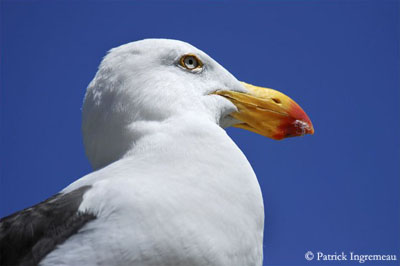
LARIDAE
Gulls, terns, noddies and skimmers
Family Laridae belongs to the large Order Charadriiformes.
We find several types of birds in this family. All are closely related to oceans and seas throughout the world.
Gulls, terns, noddies and skimmers form this group from small to medium-sized and large birds performing strong flight and having spectacular hunting behaviour.
DESCRIPTION OF THE SPECIES:
Gulls may have slim body, but some of them are bulkier. The long, narrow wings are often pointed. Tail is usually broad and mostly rounded. Bill is prominent, ranging from sharply pointed to rather blunt. Gulls often have a conspicuous gonys angle towards the tip of the lower mandible.
SUMMARY OF THIS STUDY
Introduction and Description of the species
Reproduction :
The nest
The defence displays
The courtship displays
Nesting behaviour
Text and other pictures by Nicole Bouglouan
PHOTOGRAPHIC RAMBLE
Photographers:
Aurélien Audevard
OUESSANT DIGISCOPING
Didier Buysse
Vision d'Oiseaux
Maxime Dechelle
LEPAPARRAZO
Steve Garvie
RAINBIRDER Photo galleries
Tom Grey
Tom Grey's Bird Pictures
Patrick Ingremeau
TAMANDUA
René Lortie
http://rlortie.ca
Tom Merigan
Tom Merigan’s Photo Galleries
Niraj V. Mistry
Photo Galleries
Bob Moul
Nature Photography
David Nowell
GALLERY
Otto Plantema
Trips around the world
Sources :
HANDBOOK OF THE BIRDS OF THE WORLD Volume 3 by Josep del Hoyo-Andrew Elliott-Jordi Sargatal - Lynx Edicions - ISBN : 8487334202
THE HANDBOOK OF BIRD IDENTIFICATION FOR EUROPE AND THE WESTERN PALEARCTIC by Mark Beaman, Steve Madge - C.Helm - ISBN: 0713639601
OISEAUX DE LA REUNION par Armand Barau - Nicolas Barré - Christian Jouanin - Editions Orphie - ISBN : 2877632636
L’ENCYCLOPEDIE MONDIALE DES OISEAUX - Dr Christopher M. Perrins - BORDAS - ISBN: 2040185607

Larus dominicanus
Identification of gulls’ species is always complex. Young birds need several years to reach sexual maturity and adult plumage. Each year shows different patterns and colours, making very difficult to give correct age and identity.
Adult plumage is often white, with black or grey wings and black or white head.
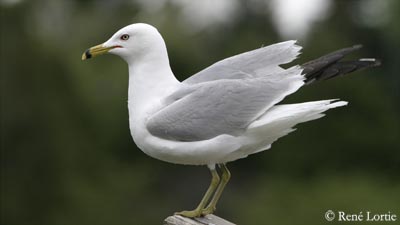
Larus delawarensis
But some species differ, such as the Ivory Gull (Pagophila eburnea) which is fully white. Other species such as the Heermann’s Gull (Larus heermanni) with several shades of grey, and the Lava Gull (Larus fuliginosus) which shows dark grey to blackish body, might belong to other family, but general looking and behaviour are unmistakable signs!
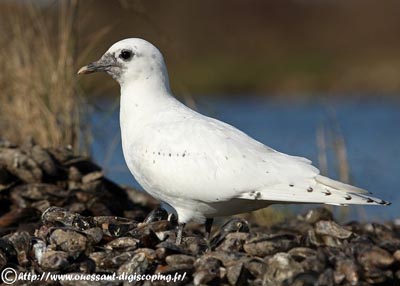
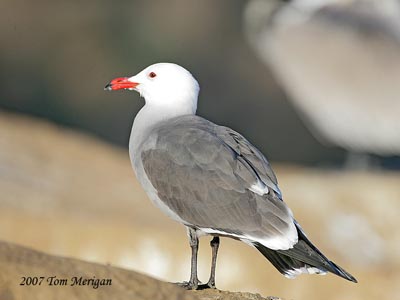
Ivory Gull - Pagophila eburnea
Several other gulls’ species have peculiar patterns and colours, but always ranging from white and black/grey to darker or paler grey wings, white body, bright coloured bill, eye-ring and legs in breeding plumage. They become duller in winter, with speckled or streaked head and neck in the black-headed species.
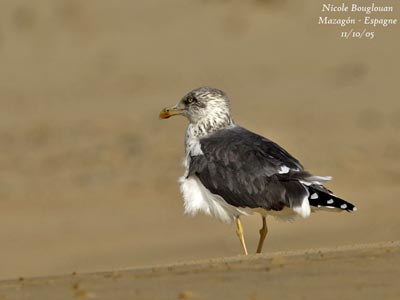
Lesser Black-backed Gull - Larus fuscus
Young birds reach the adult plumage after some years and through several shades of brown, beige, white, grey… Bill and legs also change, making really complex the identification.
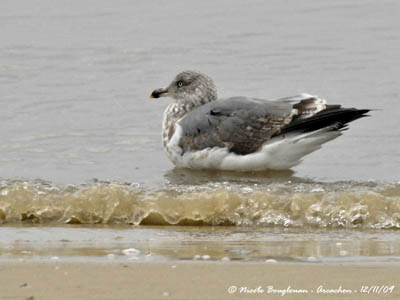
Yellow-legged Gull - Larus michahellis
Terns usually are slimmer than gulls. The main criterion is the deeply forked tail with often elongated outer rectrices. Wings are narrowly pointed. The short neck supports a slightly flattened head with long, powerful, sharply pointed bill. Legs are short with webbed toes.
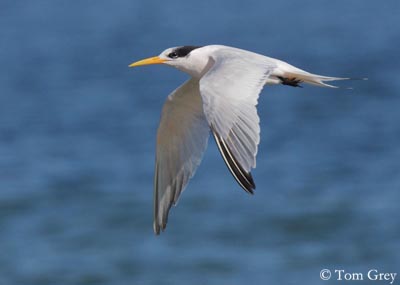
Elegant Tern
Thalasseus elegant
Most birds have white body, more or less grey wings and black crown with sometimes shaggy feathers on rear crown. Young terns need two-three years to reach adult plumage and sexual maturity. But young terns have greyer plumage than young gulls. Their wings are pale grey with blackish spots or streaks, tail is shorter and crown partially black. Identification might be easier if they were less similar!
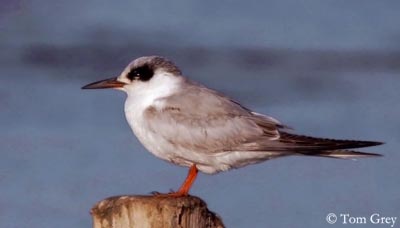
Adult plumage is usually white, grey and black. In breeding plumage, legs and bill are bright coloured. During winter, head is partially black, usually with white forecrown.
However, some species are very different in plumage colour.
The White-winged Tern (Chlidonias leucopterus) has black body and head, and greyish-white wings and tail.
The Black Tern (Chlidonias niger) has black body and head, white undertail coverts and dark grey wings and tail.
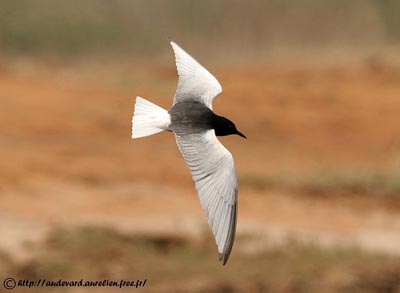
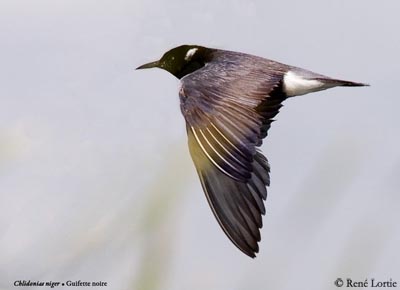
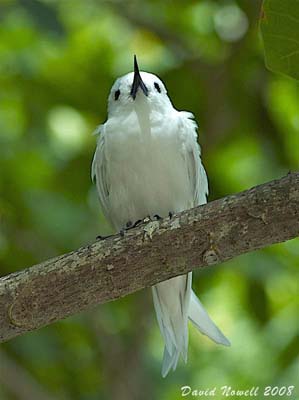
Quite different, the White Tern (Gygis alba) is fully white with black up-curved bill.
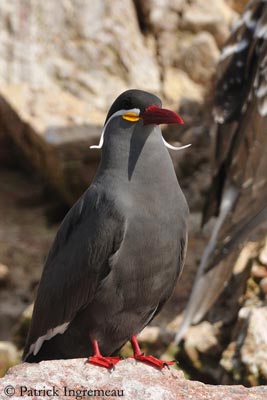
And finally, the most spectacular, the Inca Tern (Larosterna inca) has dark grey body and wings with fine white trailing edge, and black crown and tail. The head shows two long, white curved feathers on each side of the bill, and yellow bare wattles at the base. The powerful, deep red bill and legs emphasise this stunning bird.
Both sexes are similar, with male slightly larger.
Some species are relatively large. Caspian, Royal, Great-crested and Sandwich Terns may weight about 250 grams. Others are medium-sized, with a weight of 100-180 grams. The smallest weight about 80 grams or less.
Within this group, birds are elegant and conspicuous, occurring throughout the world on all continents.
Noddies belong to the family Laridae, and are closely related to the terns. They look slightly different in appearance, and these species range mainly in tropical regions.
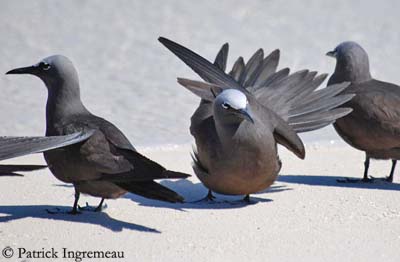
Anous stolidus
Noddies have wedge-shaped tail and mainly brown plumage, except the Grey Noddy (Procelsterna albivitta) which has white body and grey upperparts making it very similar to terns, and the Blue Noddy (Procelsterna cerulean) which is fully grey with darker flight feathers.
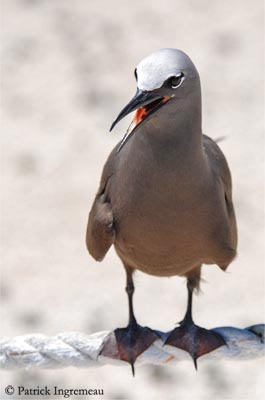
Anous stolidus
The three other noddy’s species are brown, with creamy-white crown. The Brown Noddy (Anous stolidus) and the Black Noddy (Anous minutus) look very similar in plumage, but the latter is smaller and shows pale brownish nape.
The Lesser Noddy (Anous tenuirostris) is the smallest and it has slightly paler plumage.
All have fine, sharp, black bill, dark brown eyes with more or less conspicuous white eye-ring, and black legs. Juvenile has usually paler head than adults.
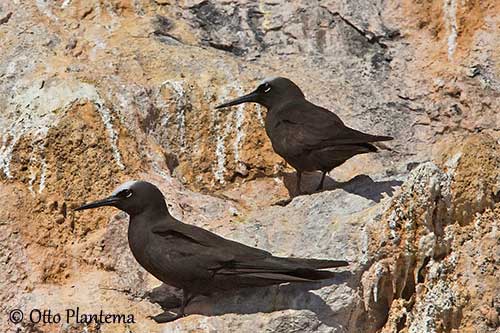
We have to notice a peculiar feature, noddies have protracted moult extending into the breeding season for the Brown Noddy, or stopping for breeding as in the White Tern which is more often associated to noddies than terns.
Identification is easier than in gulls and terns, because noddies have similar plumage all year round, due to the long period of moult.
Skimmers gather three species of the genera “rynchops”.
These tern-like birds differ from other Laridae by the stunning structure of the bill, showing shorter upper mandible, perfectly adapted to their feeding behaviour.
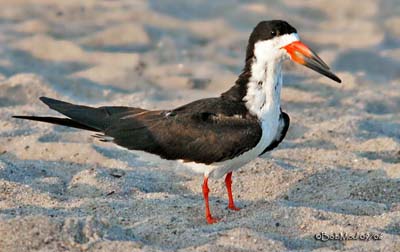
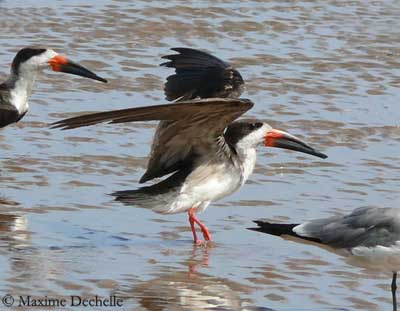
The three species are very similar, with white body, foreneck, face and forehead, and black upperparts including crown, hind neck, back, wings and tail. The peculiar bill is red with black tip in Black Skimmer (Rynchops niger), whitish in African Skimmer (Rynchops flavirostris), and pale yellow in Indian Skimmer (Rynchops albicollis). All have red legs and feet.
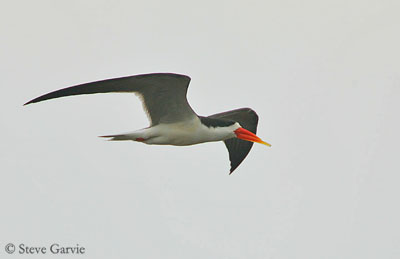
African Skimmer
Rynchops flavirostris
The plumage pattern slightly differs in extension of black and white colours. The Indian Skimmer has black crown and white neck, whereas Black and African Skimmers have black hind neck.
The African Skimmer shows longer and slimmer neck than the others. Its legs are finer too, and it has less bulky body.
All have white trailing edge well visible in flight.
Juvenile is browner above, with some paler streaking, mottling and scaling. Bill is duller and slightly shorter.
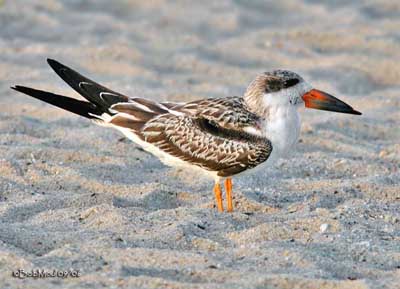
Black Skimmer juvenile
Rynchops niger
Adults in non breeding plumage have duller and browner upperparts. Black and African Skimmers show white nuchal collar, whereas Indian Skimmer is only duller and browner above.
They have two moults, before and after the breeding season, and the moult of the flight feathers is protracted.
They range in tropical and subtropical regions.
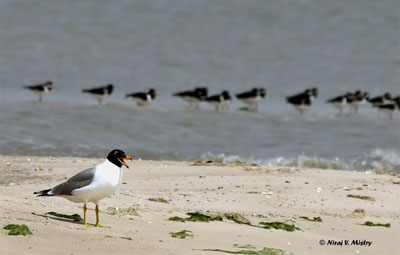
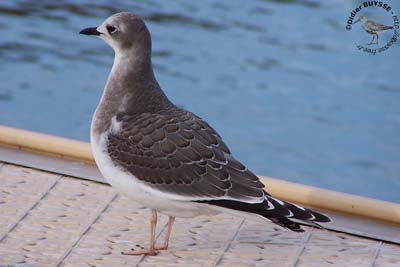
Black Noddy
Anous minutus